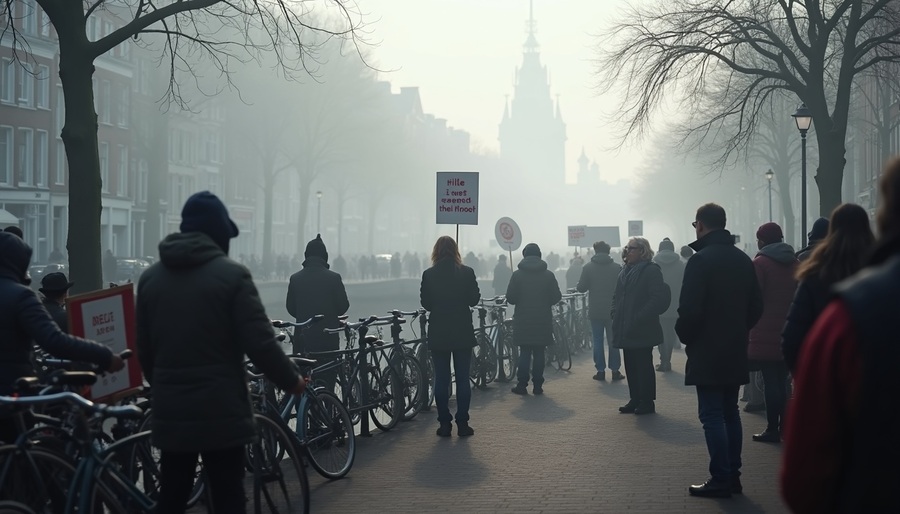Croatia And Norway Enforce Bold Cruise Restrictions To Promote Responsible Travel In Venice Dubrovnik And The Balearic Islands
Thursday, July 3, 2025

In response to rising concerns over overtourism, Croatia, Norway, and key destinations across Southern Europe have introduced strong new measures to control cruise ship traffic and protect local communities. From limiting the number of vessels and imposing passenger taxes to banning oversized ships altogether, cities like Dubrovnik, Venice, and Palma de Mallorca are leading a movement toward more sustainable travel. These reforms aim to preserve historic sites, reduce environmental damage, and encourage responsible cruising practices that allow visitors to enjoy Europe’s coastal gems without overwhelming them.
Across Europe, renowned coastal destinations are enforcing new regulations to limit the environmental and social impact of cruise tourism. With overtourism becoming an increasingly urgent issue, countries from Norway to Greece are introducing cruise passenger levies and docking restrictions to manage crowds and preserve their heritage sites and ecosystems.
The surge in cruise ship arrivals—often bringing thousands of passengers into historic centers and fragile coastlines within hours—has sparked concerns among residents, environmental groups, and local governments. In response, several nations are implementing sustainable tourism policies that target large cruise vessels, which are often viewed as a major contributor to overcrowding and environmental degradation.
Norway recently unveiled a measure that will allow its municipalities to impose a tourist tax on cruise passengers starting next summer. The levy, set at three percent, applies to both overnight stays and cruise arrivals. The initiative reflects a growing desire among Nordic regions to manage the flow of tourism while funding environmental preservation efforts and local infrastructure upgrades.
Similar measures are being adopted in the Mediterranean. Starting next year, the iconic French Riviera resort of Cannes will significantly tighten its cruise regulations. The city will reduce by half the number of very large ships allowed to dock and introduce a cap of six thousand cruise passengers per day. This bold move is part of what local authorities have described as a drastic approach to preserving the quality of life and protecting cultural landmarks.
Located nearby on the Mediterranean coast, the city of Nice introduced its own set of cruise ship restrictions starting on the first of July. The aim is to control the high volume of visitors disembarking into city streets, especially during the peak summer months when local infrastructure is stretched thin.
In Greece, cruise ship passenger taxation also came into effect on the first of July. Two of the country’s most visited islands—Santorini and Mykonos—now require cruise passengers to pay twenty euros during peak season. These new levies are designed to support local services strained by seasonal influxes, while also deterring mass arrivals that strain the islands’ limited resources.
Some destinations have taken an even firmer stance.In 2021, Venice officially prohibited large cruise vessels from accessing its historic lagoon to protect the city’s delicate environment and heritage. The decision followed years of environmental damage and civic protests over the impact of large vessels on the city’s UNESCO-listed sites and fragile waterways.
Barcelona followed with restrictions in 2023, limiting access to cruise ships as part of a broader sustainable tourism campaign. Amsterdam is progressively reducing cruise ship activity in its harbor, with plans to implement a complete ban by the year 2035. The Dutch capital’s phased strategy reflects a long-term vision for rebalancing tourism with livability and environmental standards.
Beyond mainland Europe, several islands are also adjusting their approach to cruise tourism. Palma de Mallorca and the wider Balearic Islands have introduced strict limitations on cruise tourism activity. The city now allows only three cruise ship arrivals per day, with only one ship permitted to carry over five thousand passengers. This policy helps reduce congestion and allows visitors to experience the island without overwhelming its streets and beaches.
Rather than discourage seafaring tourists altogether, local tourism boards are encouraging alternatives that align better with sustainability goals. Clipper cruises and small-group sailing tours are emerging as popular ways to explore coastal Europe without the environmental burden of mega-ships.
In Croatia, the picturesque coastal city of Dubrovnik has also adopted a measured strategy. A new policy limits the number of cruise ships allowed to dock per day to two, with a combined passenger ceiling of eight thousand. This policy was designed to protect Dubrovnik’s medieval Old Town from overcrowding and to support the local community’s push for more responsible tourism.
For travelers keen to explore the Adriatic without contributing to these issues, a more sustainable option lies in small-scale yacht cruising. Sailing trips along Croatia’s Dalmatian coast allow guests to visit lesser-known islands and towns before arriving in Dubrovnik, providing a slower, more immersive travel experience. These voyages align with the city’s sustainability goals while offering visitors intimate access to local culture and scenery.
As the conversation around tourism sustainability intensifies, European countries are acting decisively to reshape the cruise experience. From taxes and daily caps to outright bans and phased reductions, these strategies signal a growing commitment to protecting cultural heritage, improving residents’ quality of life, and safeguarding the environment.
Croatia, Norway, and several Southern European destinations are imposing strict cruise ship limits and passenger taxes to combat overtourism. These bold actions are reshaping travel in hotspots like Venice, Dubrovnik, and the Balearic Islands, encouraging more responsible and sustainable cruising.
Travelers wishing to explore Europe by sea are not without options. By choosing smaller ships, off-peak travel, and responsible tour operators, they can still enjoy the beauty of Europe’s coasts—while minimizing their impact on the places they visit.
«Enjoyed this post? Never miss out on future posts by following us»









